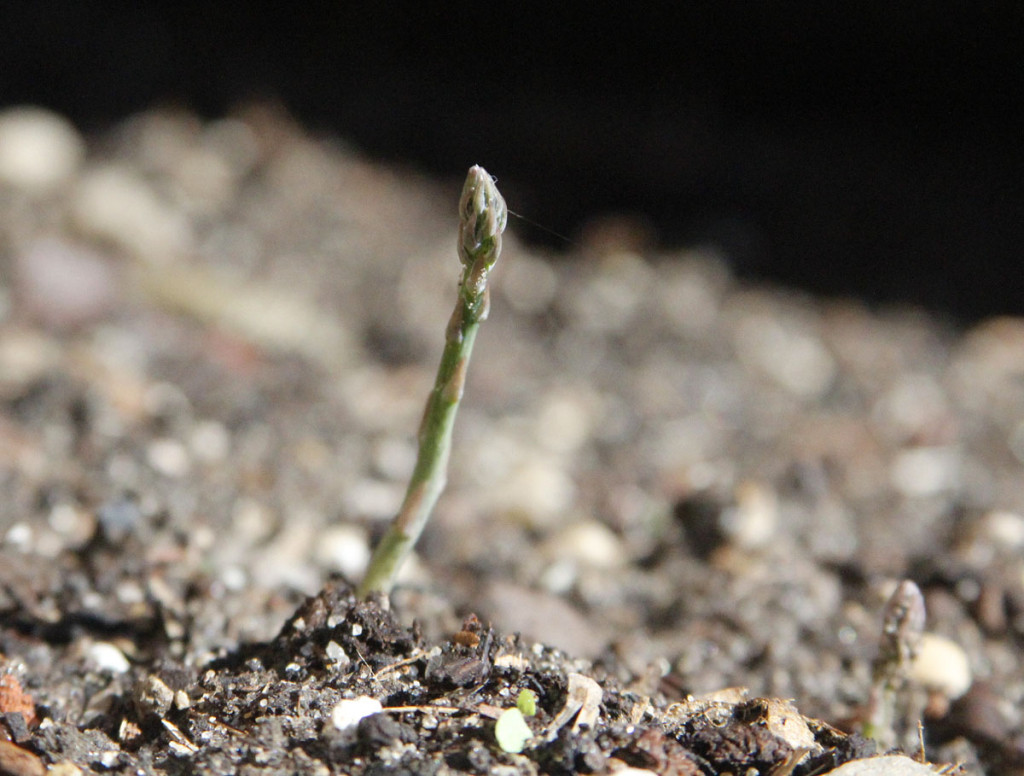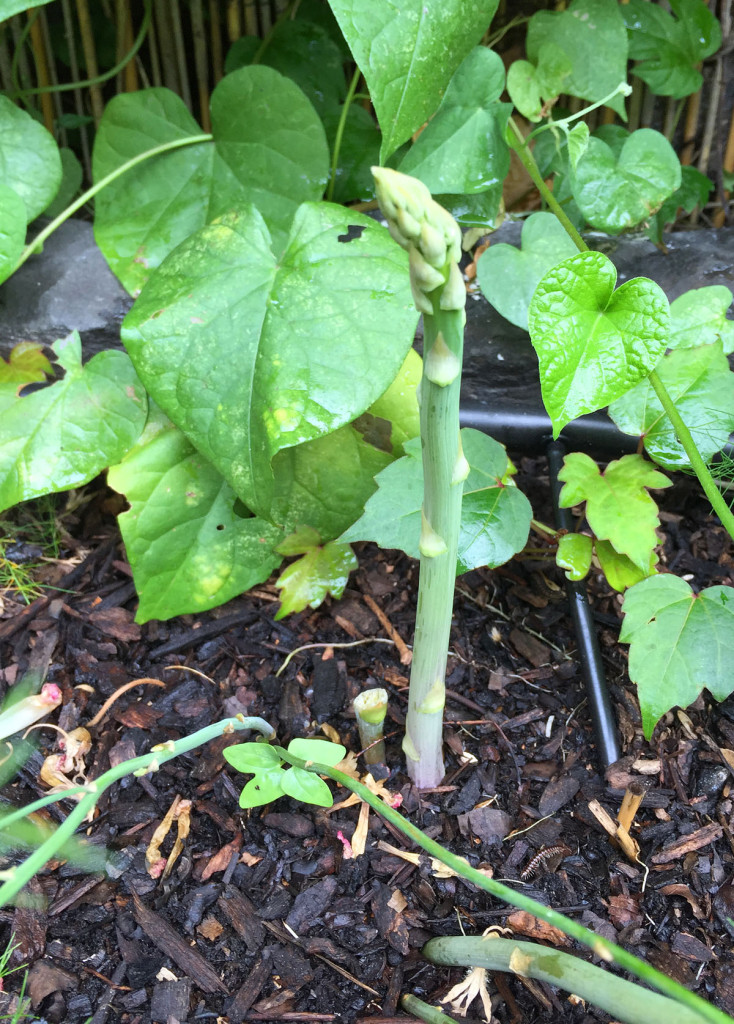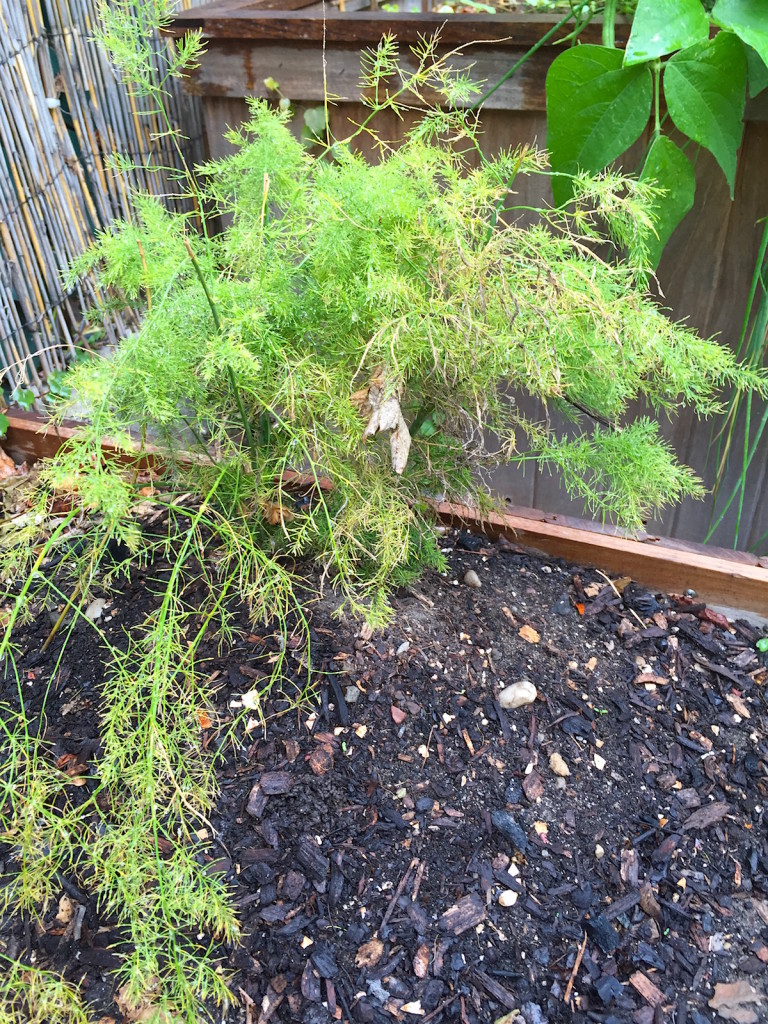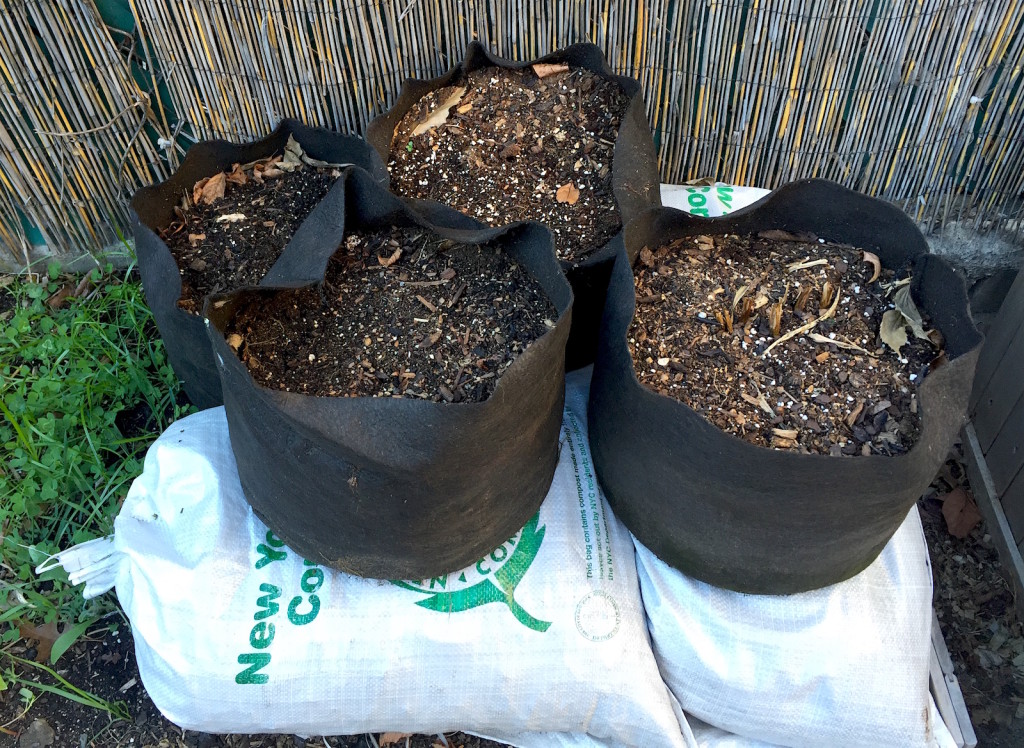I wrote in a 2014 post about the asparagus crowns that I had prepped beds for and planted. Before the winter of the first season, I covered them up with an extra layer of compost, and then put large bags of soil and peat moss over them to help protect the beds from below-freezing temperatures. It was a very cold, long winter, and I had my concerns about these guys in their new homes.
By late April, the first signs of life were appearing in the asparagus beds. Tiny little shoots.

More and more shoots came, most of them thinner than a pencil, which is normal for young asparagus plants. A few were as thick as my pinky and we cut them and had them with dinner. But over the rest of the season, it became apparent that many of the crowns I had planted were not sending up shoots. Were they dormant? Dead? Haven’t dug them up yet but it would appear that about only three of the 10 crowns I planted have survived last winter. This means I’ll have to plant more crowns next spring to replace them, while leaving the three survivors intact.
Here’s one crown that sent up a particularly large shoot, good enough to eat. You can see one stump remaining where I harvested its brother earlier, and a few smaller shoots which were too small to harvest. I let the small shoots grow out into leafy fernlike structures which help feed the root system.

So next year, there will have to be some new crowns in town.
By early November, the bunches of asparagus ferns that had been going strong all season were starting to look a bit spent. Hopefully they had improved their roots systems underground over the season, as they had produced only a few token edible spears. These ‘ferns,’ as they are commonly referred to, are the mature stage of edible asparagus spears. In their first years, it’s best not to harvest the thin ones, but to let them photosynthesize and send energy down into their roots, so as to build a strong root system. So often our asparagus beds look more like fern beds, at least for now.

I wanted to protect the roots as best I could from the harsh temperatures of winter, so on top of each asparagus bed I laid down some layers of padding, wood chips, bags of compost, and whatever else was around.

This made the 2015 asparagus season a wrap. Mostly I learned that very young crowns can be fragile, and that their first winter can really take a toll on them. They are also said to be heavy feeders, but layering on tons of fresh compost several times a season is somewhat impractical in our setting. We did get some good-sized edible shoots from the survivors, so it does seem like a viable urban crop, and I am looking forward to bolstering their numbers in spring 2016.